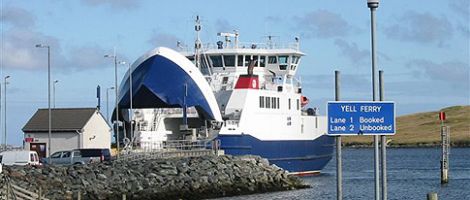Council / Council still not ‘financially sustainable’ after setting latest budget
SHETLAND Islands Council is set to remain in a financially unsustainable position after passing its budget for the next financial year.
A headline figure for the 2022/23 budget is that the council will require an “unsustainable” draw of more than £5 million from its reserves to balance its income and expenditure.
This is affordable in the short term due to the high value of investments, councillors were told, with reserves valued at around £445 million at the end of December.
The council has improved its balance book over the last couple of years as the draw on reserves is reducing.
The latest budget includes specific ring-fenced income from the Scottish Government to cover in full the shortfall in funding for running the inter-island ferries, which councillors have fought for over a number of years.
What it does not include, however, is anticipated income from council tax and social housing rent increases after elected members rebelled against officers’ recommendations and voted to freeze both charges.
This means that the draw from reserves will have to increase by around £300,000, although it may be able to be later offset by underspends.
The loss of extra rent – around £176,000 – will need to be funded from the council’s housing revenue account reserves.
The budget was passed at a lengthy meeting of the full council on Wednesday.
Prior to the council tax and rent freezes the local authority planned to spend £139.6 million on public services, with a total income anticipated of £134.5 million.
The budget includes an overall sustainable draw of nearly £25 million from the council’s reserves.
Finance chief Jamie Manson said there is additional local authority funding pledged by the Scottish Government which has not yet been distributed to councils.
Savings and efficiencies worth £3.3 million have been incorporated into the budget, although there has been a growth of £7.6 million.
Become a member of Shetland News
The council also plans to increase its workforce headcount by 55.4 full-time equivalent posts during the year.
Council leader Steven Coutts said this spend was well justified and included supporting staff in areas like energy efficiency and the ferries.
The budget also includes an asset investment plan which looks at the capital spend the council is planning over the next five years.
There is around £20 million worth of capital spend planned in the year ahead, and £120 million over the next five years.
While there is recurring work like building, equipment and road maintenance, there is also funds outlined for a number of large projects.
A total of £17 million has been attributed in the books for a possible new Brae High School, but the council aims to attract cash from the government for this should it get through the business case process.
The situation is the same for a new Fair Isle ferry (£24.565 million), which the council is still pursuing external funding for.
The previously approved Cullivoe road is in the plan at a cost of nearly £5 million, as is proposed Levenwick road work, while £3.8 million is set aside for the redevelopment of the former Anderson High School site.
There is £3.3 million outlined for a Lerwick childcare provision project, which still needs to go through the business case process and is being kept out of the public domain at this stage, while nearly £700,000 is allocated for the museum store at Staney Hill.
During Wednesday’s meeting there was also discussion over how the council intends to use funding from the Crown Estate to support Shetland hosting the Tall Ships Races in 2023.
Development director Neil Grant assured councillors that the spend – worth more than half a million – went through a “rigorous” assessment process.
He said it does not mean community projects have less chance of bidding for cash from the Coastal Communities Fund, which invites local groups to apply for a share of the money the SIC receives from the Crown Estate.
The SIC receives around £1.5 million a year from the Crown Estate for the fund, but due to delays with projects the actual spend is a lot less than the amount of money accumulated.
The council is able to use money from the fund, which distributes revenue from Crown Estate marine assets 12 miles out to sea, for activities which are not statutory duties.
Become a member of Shetland News
Shetland News is asking its readers to consider paying for membership to get additional perks:
- Removal of third-party ads;
- Bookmark posts to read later;
- Exclusive curated weekly newsletter;
- Hide membership messages;
- Comments open for discussion.
If you appreciate what we do and feel strongly about impartial local journalism, then please become a member of Shetland News by either making a single payment, or setting up a monthly, quarterly or yearly subscription.






























